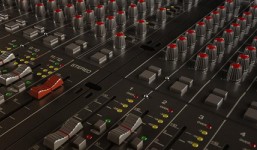Top Production Tips for Music Production & Music Producers
As a respectable provider and agent for high quality music production, mixing, mastering and audio enjoyment we pride ourselves on our advice, pointers, sources and skill sets required to make great music. Below is a range of ideas and tips we recommend for all you budding creatives to sink your souls into and then create more than your usual ‘sound’, using these ideas and processes:
DRUMS:
Drums and drum programming are one of the most important aspects of any track/song (provided they are intended to be present). The energy required for a big track will often come from the drums and their sounds/patterns programmed/captured/recorded. Having produced, mixed and mastered a wide range of genres for over a decade and also supported some super producers and new chart toppers, we can safely say that the Drums are too often neglected, rushed and not given the time they deserved with enough detail to get the real energy and soul to compose to or from.
Golden drum programming rule: Do the drums sound insanely good just solo’d? If they dont you still have work to do perhaps?
Our first point: Programme first. Don’t allow yourself to over programme so you have a mass of sounds that cloud each other or steal the real swing, energy, magic and soul of the drums or track. Make your life easy and write simple templates for drum sounds and programmes, then you can be extra picky about your sounds and ideally produce and edit this all in real time. Take it from the pro’s, your sounds are your real weapons in music production. If you only have a basic drum sound library, get online, sample, purchase credible and approved sound packs and download all the freebies you possibly can.
Next step: Layer!! Layered drums are the real secret behind many hits of today and yesteryear. So, be picky about your drum sound’s, sources and your go to sample library. You are only ever as good as your sounds. For example sampling a live drummer with great swing and talent is and appears ideal. But again if the sampling/recording process is done using cheap equipment (mainly the sound card/audio interface) you will have a ‘cheaper’ sound overall often loosing valuable frequencies that could give the drums that extra oomph. So once again, choose sounds suited for your chosen production genre and really really pay attention to the quality and frequencies present. Use a frequency spectrum analyser if you have to initially, but your best friend is always your ears. Ask yourself every time this: Do the sounds have energy to start? If not go and find something closer to that sound again, but this time one that packs a real punch for its job! Continue to repeat this as you layer your kicks and snares, making this as a default practice from here onwards.
Last step: Reference! Probably the most neglected, yet most important part of any music production process is to ensure you reference a track that is already a great song and inspiration. This will give you a formula/recipe for success already and help you listen and check (AB referencing) for areas that are correct and still to improve or address. The more that this is done often it helps you to save time and ‘cheat’ to get a better pattern quicker and steal easy reference ideas and frequencies to create a ground breaking impact with your new song.
Finally: Put them back into the mix and see what you have. Ask your self this: Have they stolen all the glory or have you equalled your musical composition now? If they are too much, soften the sounds again but only marginally at first, if they have created a new impact and now embarressed other sounds present you now need to mute your drums and further enhance your musical composition parts and bring them up to the new standard.
COMPOSING RIFFS, BASS LINES, CHORDS & MELODIES
Depending on your composition level, methods and knowledge you will have probably developed your own shell or default practice by mistake. Our advice is to really challenge this and push yourself to learn more and come out of your comfort zone each time you approach a track. For example if you sample, try to learn how to compose what you may have sampled, or identify the music theory used in the sample more. If you are a composer by choice, when you compose can you do it with 1 or 2 hands? Is this also always using the same scale/s. Get online learn new chords and variations, youtube has a million and one lessons for this and online chord libraries are everywhere in a simple google search. Are you using music theory or ultimately just having a lot of ‘happy mistakes’?
Our point here is simple, never produce safely, push yourself and your comfort zones to avoid having repetitive costly habits.
Golden music composition rule: Do I know the key, the possibilities from this and how to capture and boost the real drive of my composition?
A great production rule to work from is to solo either the music or the drums. Golden question again: Do they sound equally awesome solo’d? You cannot afford to like your sounds you must love them all. If they now don’t sound so strong you will need to sort that asap. When they’re finally put together again ask yourself this; do they create an incredible duo? If not this is again the new focus.
First Step: The possibilities for your sounds outside of drums and percussion is endless so to be more supportive in our advice we recommend you listen and identify what we call the ‘real meat’ of your instrumentation/sample/composition. Focus on this and just like the drums advice, get it clean and simple. Dont let other complimentary sounds cloud the real magic. If anything enhance and layer that real magic again, to make the song communicate better on simple ears.
Second Step: Layer, harmonize and expand sounds. Can you add more to your composition again by literally duplicating the riffs and chords again that make it have that magic glow of the pro’s? The wall of sound theory applies massively here. Experiment with sounds, octaves and layered sounds. These can take a simple riff or melody to a massive in your face memorable musical composition. Good music and great songs are often very very simple, with attention to detail in its layers.
Final Step: Present your strongest sound and build around that with your mix. Whilst mixing and mastering is a very separate and crucially detailed post production process, some of the hard work can be done to help you more during the production phases by announcing the strongest and catchiest elements in the basic mix and building around these.
Just like we advised for the drums, the real test and identifier if this was done right is to now solo both the drums and then the rest of the sounds and make sure these too are also loveable and then ensure they both compliment and enhance each other together.
Finally some excellent reference sources are found in our web links below:





